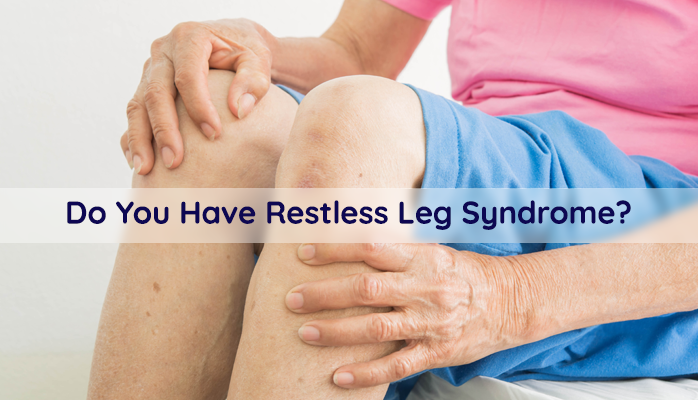Definition of Restless Leg Syndrome (RLS)
Restless leg syndrome (RLS) is a nervous system disorder that causes uncomfortable feelings in your legs, making you want to move them. The discomfort of RLS is usually enough that it interferes with sleep (causing sleep deprivation), therefore classifying it as a sleep disorder.
Symptoms of Restless Leg Syndrome
The symptoms of RLS all have one thing in common: discomfort in the legs that ranges from mild to intolerable. RLS symptoms may come and go, and may be chronic or intermittent. When the discomfort is enough to keep you up or wake you up, it is considered a sleeping disorder.
Some of the symptoms include feeling the following on your legs at night:
- Aching, throbbing, or burning
- Cramping (especially in calves)
- Jerking
- “Buzzing” or “vibrating”
- “Itchy”
- “Pins and needles”
- “Creepy crawly”
- Irresistible urge to move your leg to relieve the discomfort
The good news about RLS symptoms is that, as long as they are not mild, they are often easy to identify – i.e., it’s hard to miss an irresistible urge to relieve discomfort. If you notice these symptoms and live in Anchorage, you can consult with us or your healthcare provider to begin the road to treatment.
Causes of Restless Leg Syndrome
The causes of restless leg syndrome are generally not known, though genes may play a role (nearly half of people with RLS have a family member who also has it). For many people it’s “just one of those things”.
Some factors that influence the severity or onset of RLS are:
- Certain diseases include symptoms of RLS, such as anemia, Parkinson’s, and diabetes
- Some medications, such as antinausea drugs or antipsychotic drugs, may make RLS symptoms worse
- Pregnancy (especially in last trimester)
- Sleep deprivation may also trigger symptoms
In some cases, like onset during pregnancy or after sleep deprivation, it may go away naturally. In other cases, RLS may be a chronic problem without treatment.
Risk Factors for RLS
RLS may affect up to 10% of the U.S. population [WebMD]. Here are some facts about who is at risk:
- Affects both sexes but is more common in women
- May begin at any age (even in young children)
- People who are severely affected are generally middle aged or older
- Certain diseases include symptoms of RLS, such as anemia, Parkinson’s, and diabetes
- Some medications, such as antinausea drugs or antipsychotic drugs, may make RLS symptoms worse
- Sleep deprivation may also trigger symptoms
Consequences of RLS
The primary risk for restless leg syndrome is sleep deprivation caused by constantly waking up at night to move your legs. Unfortunately, the sleep deprivation may also worsen your symptoms.
Indirectly, another risk for people with mild or intermittent RLS is that it will go undetected or misdiagnosed. The problem here may be mild but chronic sleep deprivation.
Treatments Options for Restless Leg Syndrome
There is no direct treatment for RLS such as, for example, sleep apnea has with CPAP devices.
Some treatments used in mild to moderate cases of RLS are targeted at lifestyle changes such as:
- Beginning regular exercise
- Developing good sleeping patterns/habits
- Reducing the use of stimulants
- Reducing the consumption of alcohol and tobacco
Non-lifestyle treatment methods include:
- Leg massages
- Hot baths and/or ice packs
- A vibrating pad
In some cases drugs may be used, but the effects may relieve or worsen your RLS (results are sporadic) and the effectiveness may lessen over time.
If you live in Alaska and are concerned that you may be struggling with RLS, consult with us to begin your road to recovery and no more uncomfortable legs.


